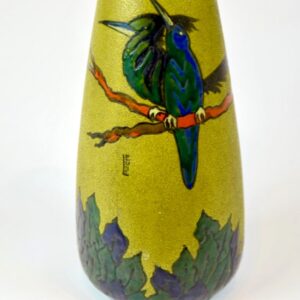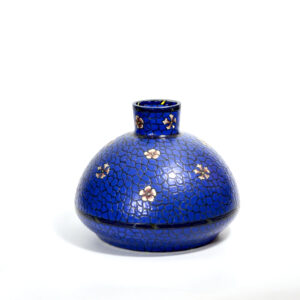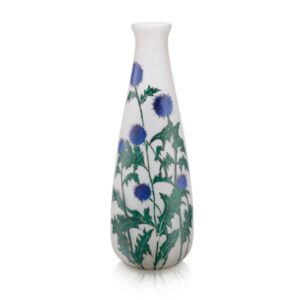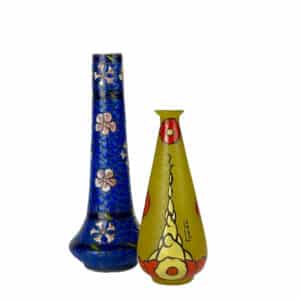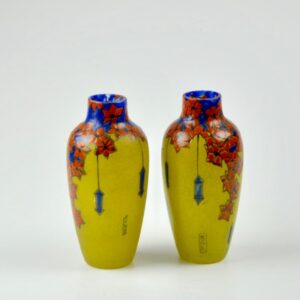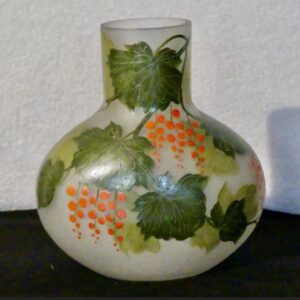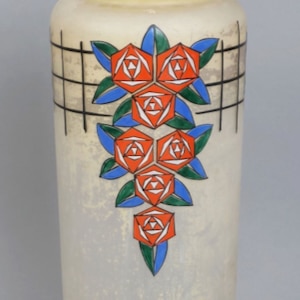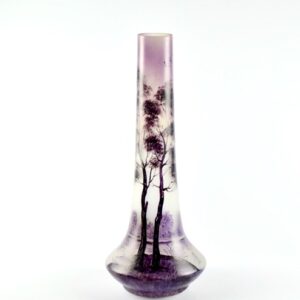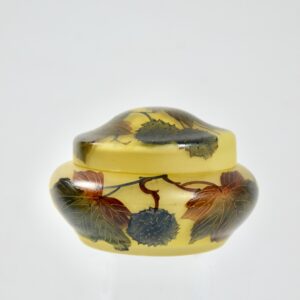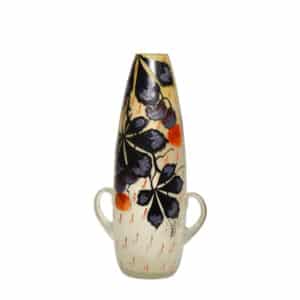Leune, and a brace of exotic birds
 This flamboyant Art Deco vase is a perfect example of the taste for enamelled glass in France in the 1920s. It was made by Maison Leune, a Paris glass factory in business from around 1900 to 1930.
This flamboyant Art Deco vase is a perfect example of the taste for enamelled glass in France in the 1920s. It was made by Maison Leune, a Paris glass factory in business from around 1900 to 1930.
What strikes you first are the ‘hot’ vitrified colours, the vibrant blues and greens, that yellow. Then you take in the layers of thick enamel, covering the whole surface of the vase. This design was named Martin-pêcheur – kingfisher in English, here, given an exotic twist.
Leune bought in clear glass shapes from Cristallerie Daum. Initially Leune’s craftmen then painted the glass in cold enamel, with naturalistic forest and lakeside scenes. It was all a rather Art Nouveau affair. But tastes were changing, and the rise of Art Deco called for something more bold and exciting.
The Heiligenstein years
Auguste Heiligenstein worked at Daum and was an immensely gifted artist. Some of his finest work features in museums around the world.
From 1923 to 1926, Heiligenstein was Leune’s artistic director. He quickly brought a new brilliance to the name. Heiligenstein produced the designs, and the workers at Leune reproduced them on glass. Now, however, they fired the enamels instead of using cold painting. This technique opened up wonderful possibilities of colour and light – which brings us rather neatly back to the vase. Forget flowers. Its only purpose is to be admired and enjoyed… just as it was when it was bought in the 1920s.
